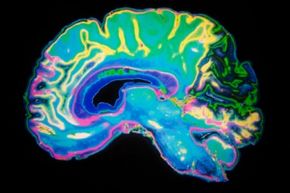It is generally accepted that autism is caused by abnormalities in brain structures or functions. Using a variety of new research tools to study human and animal brain growth, scientists are discovering more about normal development and how abnormalities occur.
The brain of a fetus develops throughout pregnancy. Starting out with a few cells, the cells grow and divide until the brain contains billions of specialized cells, called neurons. Research sponsored by the National Institute of Mental Health (NIMH) and other components at the NIMH is playing a key role in showing how cells find their way to a specific area of the brain and take on special functions. Once in place, each neuron sends out long fibers that connect with other neurons. In this way, lines of communication are established between various areas of the brain and between the brain and the rest of the body. As each neuron receives a signal it releases chemicals called neurotransmitters, which pass the signal to the next neuron. By birth, the brain has evolved into a complex organ with several distinct regions and subregions, each with a precise set of functions and responsibilities.
Advertisement
- The hippocampus makes it possible to recall recent experience and new information
- The amygdala directs our emotional responses
- The frontal lobes of the cerebrum allow us to solve problems, plan ahead, understand the behavior of others, and restrain our impulses
- The parietal areas control hearing, speech, and language
- The cerebellum regulates balance, body movements, coordination, and the muscles used in speaking
- The corpus callossum passes information from one side of the brain to the other
But brain development does not stop at birth. The brain continues to change during the first few years of life, as new neurotransmitters become activated and additional lines of communication are established. Neural networks are forming and creating a foundation for processing language, emotions, and thought.
However, scientists now know that a number of problems may interfere with normal brain development. Cells may migrate to the wrong place in the brain. Or, due to problems with the neural pathways or the neurotransmitters, some parts of the communication network may fail to perform. A problem with the communication network may interfere with the overall task of coordinating sensory information, thoughts, feelings, and actions.
On the next page, learn more about autism brain studies and research.
Advertisement

